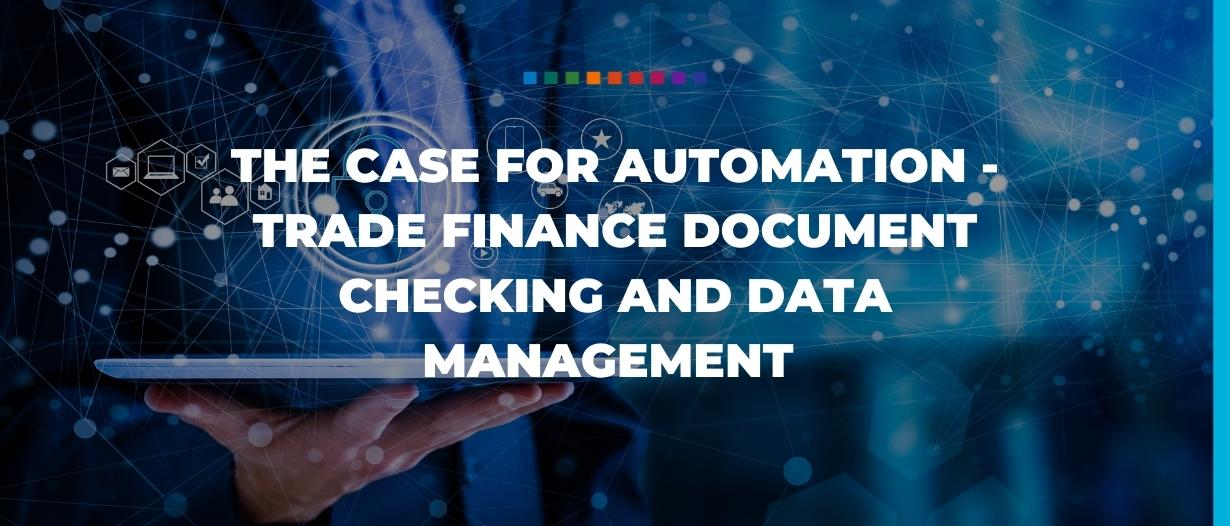Estimated reading time: 6 minutes
Each day, mountains of trade finance data are delivered to banks, requiring urgent processing to support the flow of goods around the world.
Yet this vital resource does not arrive as digital files but by courier – as physical paper documentation.
Paper documents are generated and exchanged across each stage of the supply chain and require approval for goods and financing to progress to the next stage.
From letters of credit to bills of lading, each trade document contains essential information.
Banks need to extract some of this data to tick compliance boxes: demonstrating their observance of anti-money laundering (AML), know-your-client (KYC), and international sanctions regulations, not to mention confirming the veracity of trade.
The inefficiencies within this system are legendary, however. Banks view digitalisation as a potential impetus to optimise trade finance processes – including document checking.
Yet, with suppliers often located in emerging markets with low levels of digital adoption, the review process remains highly manual and time-consuming, with documents checked one by one using nothing more sophisticated than the human eye.
Certainly, paper-based documentation is a stubborn tool to remove from the supply chain.
The International Chamber of Commerce (ICC), for example, following its 2020 Global Survey on Trade Finance, said that “document verification is a notable laggard when it comes to removing the use of physical paper”.
The ICC found that 45% of responding banks reported that the use of paper for document checking had been removed “to no extent”.
Data-driven challenges
How to resolve these barriers while accepting the reality of today’s trade ecosystem?
Automation software using artificial intelligence (AI)-based document checking can provide a solution that grants banks digital access to the data buried in paper documents, allowing them to carry out their compliance checks while unlocking the potential for far-reaching data-management analysis and insights.
Upon delivery, paper documents are scanned into the system where the software “reads” their contents – the AI software being capable of recognising patterns across documentation formats.
The software compares its findings against built-in rules based on internationally defined legal requirements.
Further conditions can be added to suit country-specific guidance or sanctions, with the bank’s operatives on hand to act on any anomalies the AI detects.
Automation removes a significant manual burden from banks and their operatives.
When multiple documents are produced for each transaction, banks can be required to check more than 100 pages for a single process.
Yet, despite the painstaking hours of review and resources that manual document checking absorbs, manual processing still fails to offer sufficient protection for banks.
Anomalies in documents – perhaps missed by tired operatives – can reveal illegal activities, with the penalties for failing to catch them, even unintentionally, being punitive.
Executives can face prison sentences, not to mention fines (in 2019 banks were fined a total of $10 billion for non-compliance).
Indeed, some 40% of the fines relate to trade sanctions, with the reputational fallout being just as damaging and longer lasting.
Furthermore, the regulatory landscape is ever evolving, with both the regulations – and the penalties – escalating.
Consequently, banks have come under such pressure from AML and KYC rules that some are choosing to “de-risk” from the sector (i.e. pull out) rather than risk non-compliance.
Certainly, AML and KYC requirements are seen as a significant barrier to their growth, with 63% of ICC survey respondents agreeing that they are “extremely concerned”.
Can AI help? AI is certainly a more reliable document checker than human operatives because it is consistent.
Unlike human operatives, it will not tire or become distracted. It can improve regulatory compliance and mitigate commercial risks while streamlining a major operational burden.
What’s more, the time- and cost-saving benefits can build over time.
By leveraging machine learning (ML) technology, the software will store all transaction checks and actions taken – using both the acquired and in-built knowledge to recommend improved solutions and updates.

Data management and the future of AI
If compliance requirements are the catalyst for document checking transformation, then the most enterprising gains can be made taking advantage of improved data quality.
Automation software transforms paper-based documents into a valuable data set prepared for any downstream processes.
The data can be used for ledger purposes, including bookings and payments, while further analysis can inform strategic decision-making.
In fact, automation at the document checking level supports broader digitalisation efforts within the bank.
This is not an alternative to digitalisation of the supply chain: it is software that can drive a bank’s digital journey without imposing on clients or stakeholders.
Whether the supply chain is paper-based, digitalised, or a hybrid: AI can check the documentation.
Digitalisation is a challenge, requiring a tailored approach to each implementation.
To advance efficiency, AI document checking must complement existing authentication tools within a bank, not duplicate or reinvent useful processes like World Check and Oracle.
Combined with a data-driven approach to onboarding automation software, a bank can successfully take full advantage of the accompanying influx of data.
The introduction of automated document checking can optimise trade finance processes throughout the bank, therefore opening up further opportunities for its application.
Across their offerings, banks need to undertake tedious, repetitive, and error-prone tasks associated with KYC requirements.
The work of AML screenings, identity verification, and country-specific workflows can be done by AI while automatically producing an audit trail.
The role of document checking automation can expand in time to capture other banking processes, such as credit assessments for corporate lending.
System resilience
AI-based automation also provides opportunities to make trade more resilient.
Some of the pressures on trade and its supporting financial mechanisms are unpredictable.
If the outbreak of COVID-19 has shown the fragility of global systems, automation presents a solution that can mitigate the disruption.
For example, digitalisation allows operatives to work from home, such as during the recent pandemic.
During periods of fluctuating workload or when operations need to scale, tasks can be more easily reallocated, enabling agility in day-to-day operations, and especially during disruptive events.
In addition, if automation is approached as a change management system, it can also help to manage broader transitions impacting the industry.
Over the next five years, banks will see an exodus of retiring experienced staff.
The new generation entering the workforce are “digital natives”, with skills best applied to technology-based tasks rather than legacy paper-based activities.
Incoming employees can also benefit from the knowledge stored by the AI, which reflects the insights and actions of their more experienced colleagues.
Lifting the burden of manual checking also affords authorisers the opportunity to focus on more cerebral tasks – they act on the anomalies discovered by the AI.
Employees’ insights can add more value, thus contributing towards a more rewarding working environment.
Ultimately, AI-based automation presents a practical route to successfully manage the trade finance data available to banks.
From accessing the critical compliance information inside trade documents to optimising downstream data sets within the bank, and making best use of the knowledge and skills trained authorisers bring to the table.
The future is certainly digital. Yet the routes to this digital future are more flexible than many have previously considered.





























